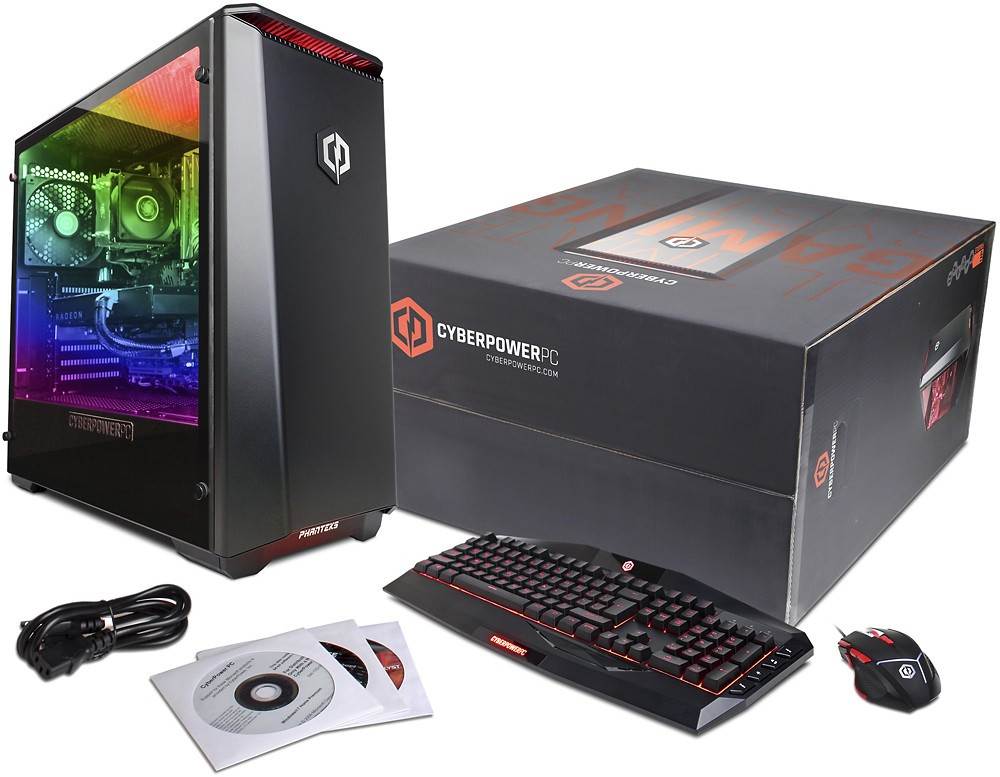Virtual reality effectively ‘arrived’ in 2016, with the launch of Oculus Rift and the HTC Vive, the first two consumer VR headsets that truly delivered an experience that most would find not only tolerable, but actually enjoyable.
But consumer VR’s splashy debut in 2016 did not result in something that was immediately affordable, available, or indeed appealing to many, so it’s no surprise if you’ve been standing back and waiting for a time to jump in.
Now might just be the time; a confluence of factors, including a lot of great software that eschews mistakes made by early movers, as well as dramatic decreases in the cost of entry for VR-capable computers, have made it a good time to get onboard the virtual train. Here’s a guide to one way to get started that should give you the most mileage for your dollar, while also making sure you’re not missing out on the best VR experiences currently on offer.
The Rig
Your PC is potentially the most frustrating thing to get right, because there are a lot of options out there for Windows machines that can power VR headsets, along with the option to roll your own. I’d suggest that novices go for something that can get you gaming right away, with a minimum of fuss, but with room to grow if you find you want to invest the time and money later on.
That’s why I recommend one of CyberPower PC’s pre-built rigs. The one that hits the sweet spot in terms of value for money right now is the CyberPower Gamer Ultra Desktop series with AMD Radeon RX 480 GPU. It’s a minimalist approach that strips out all the unnecessary frills and focuses on the components that are most important to a smooth VR experience, centering on that AMD graphics card.
Latest Crunch Report
It’s expandable if you still want to beef it up later, and it retails for just $699.99, which makes it about half the price of what a decent VR-capable PC would cost you when Rift and Vive launched. Plus, in my experience it doesn’t choke on any VR games, and I’ve played a wide range.
The Headset
I’ve gone back and forth on this, and it’ll depend on your personal preferences, too, but now that Oculus Touch has arrived, I’d recommend getting the Oculus Rift to start. The Rift provides better visuals in my opinion, setup and game space requirements are simpler, and it has a better library of titles currently available, between Oculus exclusives and the wide variety of SteamVR content that supports both Rift and Vive.
The Rift is also more comfortable to wear, and its built-in headphones, while not the best available, are incredibly easy to use and avoid additional cord complications. Setting up sensors is also easier, and you can choose to start with just the basic Rift if you need to budget the Touch controllers for later. It’s true that you only get room scale-VR experimentally with a third sensor with Rift, but in practice, you won’t notice much of a difference between Oculus with two sensors and Vive’s true room-scale experience.
The Accessories
As mentioned, the Oculus Touch controllers really add a lot to the overall VR experience, and prove more fun and more immersive in practice than the Vive Controllers. They’re more lightweight, and also just seem to better represent the act of actually using your hands in a virtual environment, perhaps because of the focus on simulating grip on objects.
Oculus Touch took a long time to ship, and that gave Vive an early edge, but if you’re looking to jump into VR at this point, they’re a much better introduction to interacting with objects that aren’t really there, and developers have done amazing things early on with the accessories to make picking them up worthwhile.
The Software
There’s enough software out their for Rift that it can be overwhelming figuring out where to start. Oculus has created starter bundles that prove a good jumping off point, but if you want to pick up just a few things to get your feet wet, I’d recommend SUPERHOT VR, Oculus Medium, Space Pirate Trainer, Virtual Desktop and The Climb to start.
The games here really show off what the Oculus Touch can bring to the table, but if your’e holding off on picking that up, try Ocean Rift and Lucky’s Tale (which ships with the Rift for free) to start. When you do pick up Touch, SUPERHOT VR is a must-play; it’s the first VR game that actually got me feeling physically engaged in a game in a way that felt really natural, and it has a super clever design in terms of getting around the limitations of in-place use of VR.
Virtual Desktop is a must because it gives you a sense of what it might be like to use VR for everyday computing tasks. There are some things that are not ideal when using it (basically you have to be a touch typist), but it’s astounding how natural a lot of the interaction is. It’s also pretty inexpensive if you’re wallet’s hurting from getting set up to begin with.
2017 is VR’s sophomore year
2016 might’ve been the year consumer VR finally made it to store shelves in a significant way, but 2017 will see a lot of refinement come to VR experiences, and it’s already evident from the progress made since the beginning that this is probably the time for most tech-savvy folks to take the plunge. Building a VR system that respects your wallet is still a tough task, but using the guide above will get your foot in the door with as little budgetary outlay as possible, without any significant compromises.



![[World Sleep Day] Recovering From Daylight Saving Time May](https://loginby.com/itnews/wp-content/uploads/2025/03/1741688395_World-Sleep-Day-Recovering-From-Daylight-Saving-Time-May-238x178.jpg)



